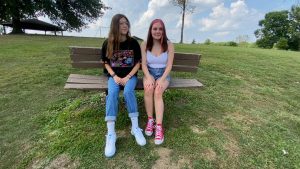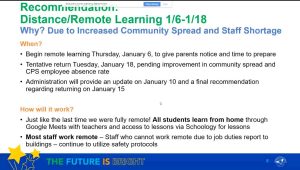CINCINNATI — On Election Day, residents across Ohio will vote on a proposed constitutional amendment that would prohibit local governments from allowing persons who lack certain qualifications to vote in municipal elections.
What You Need To Know
- Issue 2 would amend the Ohio Constitution to outline a list of qualifications required to vote in any state or local election held in Ohio.
- The initiative would make it illegal for cities and villages to allow anyone who isn’t 18 or a U.S. citizen to vote
- Proponents view the amendment as a way to protect the integrity of Ohio elections
- Opponents believe Issue 2 is politically charged and aims to drive people to the polls
Issue 2 — one of two constitutional amendments on the statewide ballot — would amend the Ohio Constitution to outline a list of qualifications required to vote in any state or local election held in Ohio.
These qualifications are:
-
Being 18 years old or older
-
Being a resident of the state, county, township, or ward
-
Having been registered to vote for 30 days
-
Having the qualifications of an elector
Proponents of Issue 2 say they view the change as needed to protect the integrity of Ohio elections, according to David Niven, a political science professor at the University of Cincinnati. Niven added that its opponents say they view it as a politically charged, unnecessary measure that aims to use anti-immigration sentiment to drive people to the polls.
The amendment also would keep municipalities – cities and villages – from allowing “non-electors” (or those ineligible to take part in state or federal elections) from voting in local elections.
To amend the state constitution, the issue needs to receive a majority “yes” vote (or more than 50%) to pass.
If passed, the amendment would go into effect immediately. Election Day is Tuesday, Nov. 8.
“The gist of Issue 2 is that under the Ohio Constitution, municipalities have been free to create their own voting standards for city elections — and only city elections,” Niven said. “Supporters of Issue 2 hope to change that.”
Niven noted that Ohio cities have used that “loophole” in the past. He cited a time in the mid-1910s when East Cleveland, Lakewood and Columbus used it to give women the right to vote in municipal elections several years before the ratification of the 19th Amendment of the U.S.Constitution.
Alex Triantafilou, chair of the Hamilton County Republican Party, said Issue 2 is about limiting that state power to ensure only U.S. citizens can vote in Ohio elections. He called it a “common-sense” initiative.
“Most Ohioans are likely surprised that such a measure is needed, but recent events from the extremist left make it so that we must enshrine this basic principle in our state constitution,” he said.
It all started in Yellow Springs
Several U.S. cities, including New York City, have, in recent years, voted to allow noncitizens to vote in municipal elections. Eleven municipalities in Maryland and two municipalities in Vermont also allow noncitizen voting on local issues.
Noncitizens in San Francisco can vote in school board elections.
In 2019, Yellow Springs, Ohio — a village about 20 miles east of Dayton — held a referendum on whether to allow noncitizens to vote on local issues and local elected officials. The referendum passed 891 to 650, or 58% to 42%.
“No votes would have been cast for president, or Congress, or even state legislature, but residents of Yellow Springs would have been eligible to vote for the village council and village ballot questions or levies,” Niven said.
In response to the referendum, Ohio Secretary of State Frank LaRose issued a press release stating that only U.S. citizens can vote in Ohio elections. Allowing noncitizens to vote violates both the U.S. Constitution and the Ohio Constitution, he said.
Yellow Springs’ leadership challenged LaRose’s decision, citing “home rule” provisions granted in the state constitution as justification. Home rule is the right for Ohio cities to govern themselves on certain legislative topics.
But LaRose responded by saying home rule only applies when an issue doesn’t conflict with state law.
LaRose directed the Greene County Board of Elections not to accept any voter registrations from noncitizens. The BOE was also told to cancel the registrations of any noncitizen residents of Yellow Springs who may have already registered to vote.
“No noncitizen ever actually cast a ballot (in Yellow Springs), but Republicans in the legislature… were so offended at the prospect of it happening that they created the issue to make a blanket prohibition on anyone ever voting in Ohio for any level of office unless they are a citizen and 18 years old,” Niven said.
Another component of Issue 2 is that it effectively eliminates the rights of 17-year-old citizens, who turn 18 years old by Election Day, to vote in a primary election. It will also permanently make the voter registration deadline 30 days prior to an election.
“The heart of Issue 2 is confirming that only residents can vote in Ohio elections, but the effect on 17 year olds was an afterthought,” Niven said.
Triantafilou “rejects” any assertion that Issue 2 will affect 17 year olds.
“There is nothing in this provision that prohibits primary voting for citizens not yet 18 and that argument is being used as a scare tactic by its opponents,” he added.
Is Issue 2 even necessary?
Jen Miller, executive director of the League of Women Voters of Ohio, called Issue 2 “certainly confusing” because of a lack of context on the ballot.
“I think many people believe green-card residents are voting in the state of Ohio at this moment, and that’s why this needs to change,” she said. “And that is not the case.”
Opponents of Issue 2, such as Bryan Wright, believe it’s irrelevant because residents already have to meet age, residency and registration requirements to qualify to vote.
Wright, executive director of Cincinnati Compass, called the ballot initiative a “non-issue.” If it passes, Issue 2 won’t change anything to change the current local election system or affect who’s eligible to vote, he added.
“It’s already the case that United States citizens are the only ones who can vote in state, federal and local elections, so creating a ballot issue on this doesn’t really make sense,” Wright said.
Cincinnati Compass works to advance the social, economic and cultural inclusion of immigrants and refugees across Ohio.
Wright said he views Issue 2 as a “direct attack” on immigrant and refugee communities.
Citing the language used on the ballot, Wright described it as being “cloaked in fear.” He feels Issue 2 is “playing into fears of people” of a political base who either have deep-seated beliefs about immigration, or the rights of undocumented immigrants cast a vote.
“I do not agree with using immigrant and refugee communities as a political ploy to play to the people’s fears of immigrant communities,” Wright added. “That strategy goes against the very work that we’re trying to do to create a welcoming environment for people regardless of where they come from or how they get here.”
Niven said Issue 2 mirrors tactics used by right-wing politicians and “interest groups” in other areas across the nation in recent years. He specifically noted legislation proposed in Alabama, Arizona and Colorado in 2020, all of which passed.
In total, six states — including Florida, Minnesota and North Dakota — have passed laws using similar phrasing to that used in Issue 2.
Louisiana voters will decide on a similar citizenship voting requirement during a state election this December.
Triantafilou described accusations that Issue 2 is “anti-immigrant” or a ploy to get people to the polls as “absolutely false.”
“Every American should support allowing only Americans to vote in American elections,” he added. “Every civilized country on Earth should do the same.”





